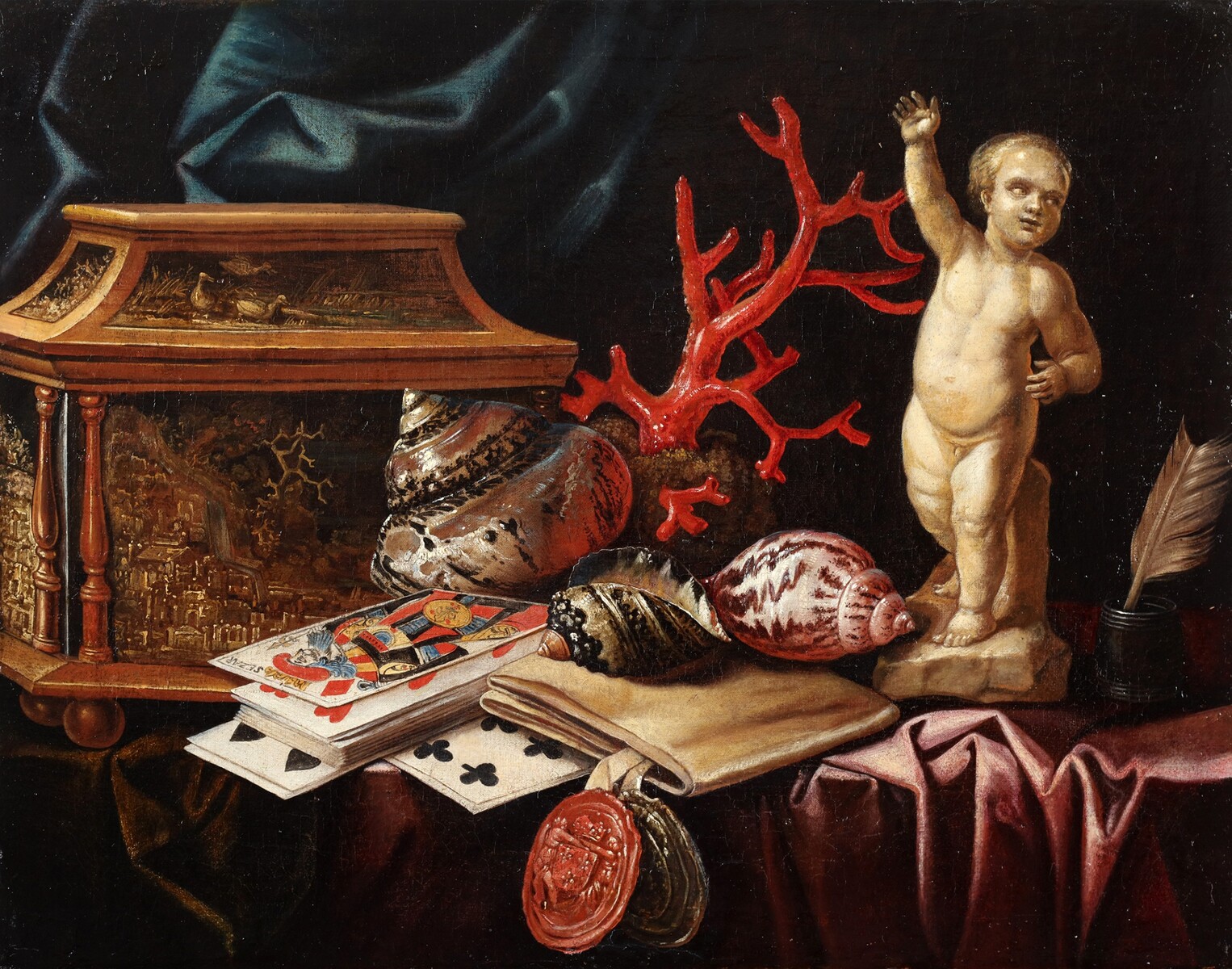Carstiaen Luyckx
Still life with playing cards, coral, shells, a jewellery box and a stone sculpture
oil on canvas : 44 X 34 cm
Unsigned
Currently for sale at Jan Muller Antiques Ghent for 32.500 €
This is a comparative item

Painting for Sale
Luyckx, Carstiaen
"Four pigeons and two rabbits against an Italianate background"
In short
Carstiaen Luyckx was a versatile and interesting Antwerp still life painter. Next to his traditional, but high quality flower still lifes, garlands, Pronk and hunting still lifes he also painted very original subjects with Vanitas themes, forest floors and a few very nice bird scenes.
Our painting stands close to another scene with pigeons that was sold for over 45.000 € in 2004 at Sotheby’s as by Jacobus Victors.
About Carstiaen Luyckx
Flemish painter
Antwerp 1623 – circa 1670 Antwerp
Still life painter.
His first name is sometimes spelt Carstian or even Christiaen.
Pupil in Antwerp of the still life painter Philip de Marlier in 1640 and from 1642 onwards of Frans Francken III. In his paintings neither one of them left their mark on his mature style. One does see the influence of Jan Davidsz. de Heem, of Daniel Seghers and of Jan Fyt (this last one on his hunting still lifes).
From 1645 onwards member of the Painter’s Guild of Saint Luke in Antwerp. In 1646 he is recorded as court painter to King Philip IV of Spain.
There are only two dated paintings known by Luyckx, both from 1650.
It is thought that Luyckx remained in Antwerp at least until the late 1650s: in 1652 he painted a mortuary crown for the deceased painter Victor Wolfvoet II, in 1653 his son (from his second marriage) was born here and he collaborated with David Teniers II and with Nicolaes van Verendael on a painting signed by all three, kept today in Dresden (Teniers and Verendael are documented in those years in Antwerp).
Subsequently Carstiaen Luyckx is thought to have left Antwerp, settling in France, probably in Northern France. Until now no traces of his stay there have been found. In 1644 he had already gone to Lille, but he had returned to Antwerp for his first marriage in 1645.
From 1649 onwards a fair number of his paintings turned out in the Dutch Republic, but there is no reason to think that at some stage he might also have moved northwards.
Luyckx was a versatile still life painter who painted Vanitas, hunting, flower and also a few fish and “pronk” still lifes.
His hunting still lifes, sometimes monogrammed “CL” or “KL”, were only fairly recently attributed to our painter. They are strongly influenced by the Flemish painter Jan Fyt. Some of them are actually still erroneously attributed to Jan Fyt, for example a painting in the Pushkin Museum in Moscow. Fred Meijer dates Luyckx’ hunting still lifes rather late in the artist’s oeuvre. In these years his style became more graphic.
Why should you buy this painting?
Because it is a beautiful example of the artistic achievement of 17th century Flemish still life painters. Look at the striking poses of the pigeons, the marvellously lit thistles and the funny rabbits: Luyckx has meticulously painted every single hair of their fur.
Comparative paintings
Click photos for more details












